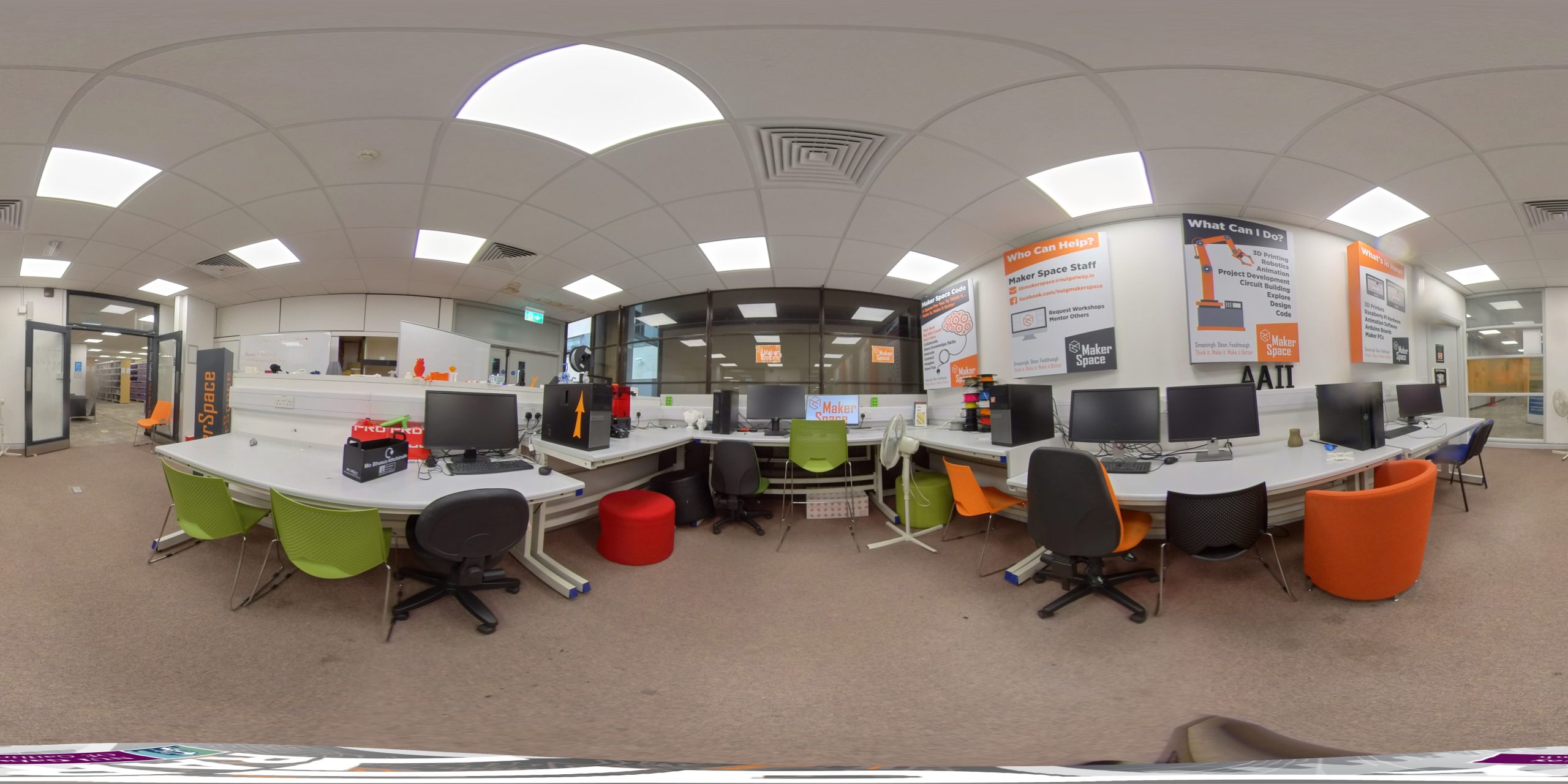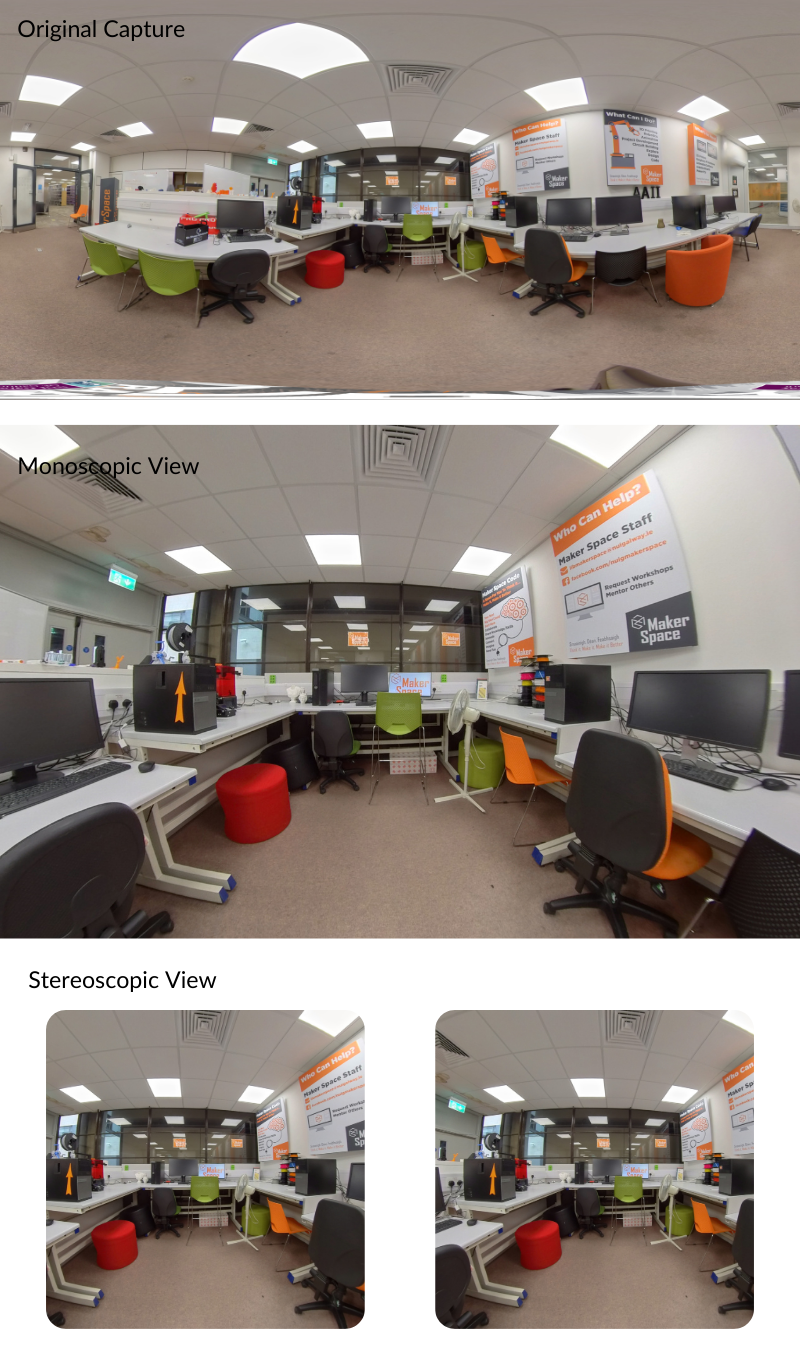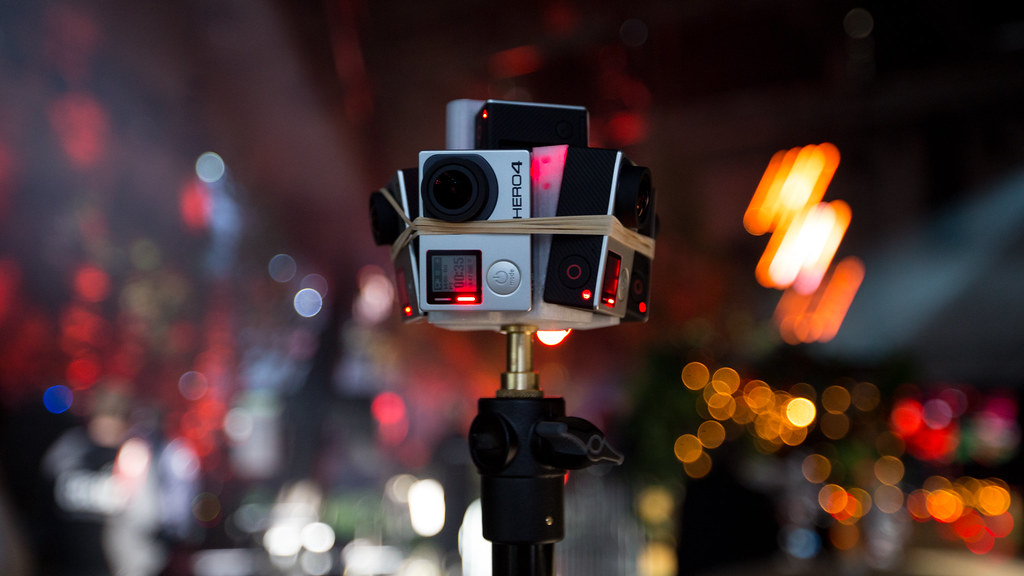5 Creating Your Own Virtual Worlds
360 Degree Video Tools & Considerations
Working in 360 Degrees

360 degree video can be a good starting point for working with VR since it gives you an opportunity to consider what is like to create a fabricated scene in every direction rather than in a specific area. With traditional filmmaking, the only thing that is shown is what the director wants you to see. Microphones, lights, assistants and scaffolding can all be off-screen. With 360 degree video everything is on display, including the camera operator. The same principles apply to painting, photography and really any visual medium: the creator chooses what is in and out fo frame. In this case, the creator chooses where to place the camera (high, low, indoors, outdoors) but beyond positioning, there is no such thing as framing.
The images which are initially captured by the 360 degree camera will be flat and distorted. Once imported into a video editor they can be adjusted and output for different viewing formats. The metadata incorporated into your video files will enable them to be read by video hosting platforms like YouTube so they can be viewed in a monoscopic or stereoscopic format depending on the viewer’s preferences.

Equipment
The Camera
There are a number of 360 degree consumer-level cameras on the market today. The MakerSpace in the NUI Galway Library has Insta360 cameras which can be rented out by staff or students using the equipment booking page on their website.
360 degree cameras work in one of two ways: by capturing images with a pair or a number of fish-eye lenses and stitching the images together in-camera, or through a rig which allowed multiple cameras to be fixed in position so an editor can stitch the footage together later.

